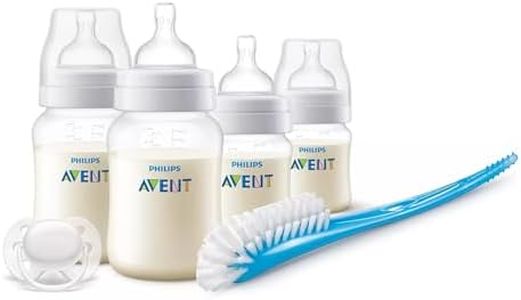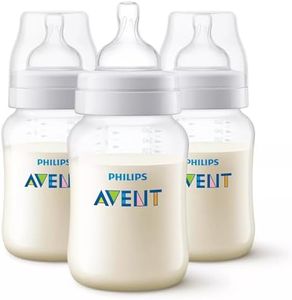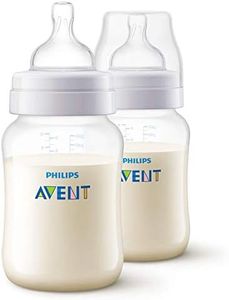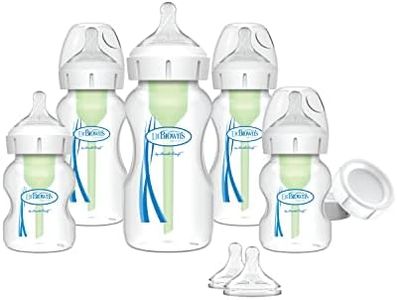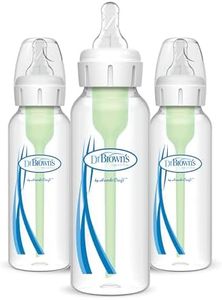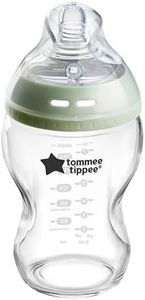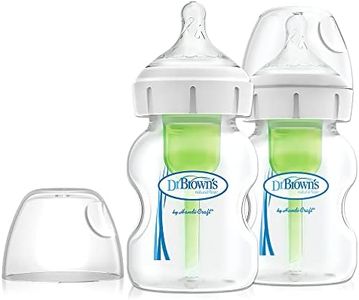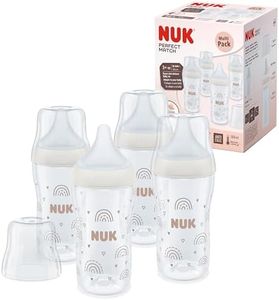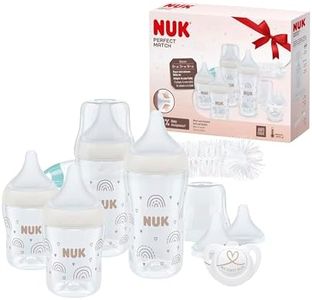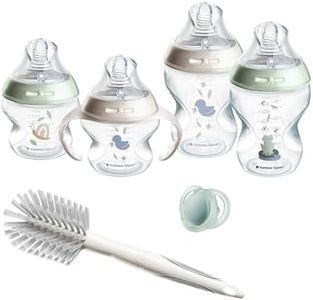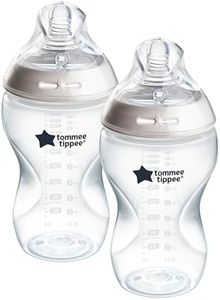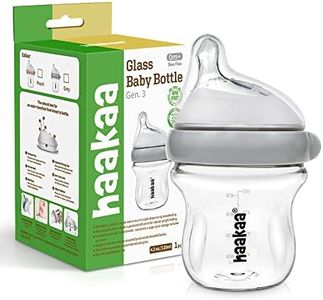We Use CookiesWe use cookies to enhance the security, performance,
functionality and for analytical and promotional activities. By continuing to browse this site you
are agreeing to our privacy policy
10 Best Baby Bottle For Acid Reflux
From leading brands and best sellers available on the web.Buying Guide for the Best Baby Bottle For Acid Reflux
Choosing the right baby bottle is especially important for infants suffering from acid reflux. The right bottle can help reduce discomfort, spit-up, and feeding stress by controlling air intake, flow rate, and feeding angle. Since babies with reflux are sensitive to how they feed, paying attention to bottle design and functionality will help ensure feedings are as comfortable and safe as possible.Anti-Colic or Venting SystemAn anti-colic or venting system is a feature built into some baby bottles to minimize the amount of air your baby swallows while feeding. Excess air can worsen acid reflux symptoms or cause more spit-up, so having a good venting system can make a big difference. Bottles come with different types of vents: some have a tube inside, vents at the base, or special nipples. When choosing, look for bottles that can demonstrate reduced air bubbles in the milk, and try to pick one that's easy to clean since complicated vent systems can build up residue if not washed thoroughly.
Nipple Shape and Flow RateThe nipple of the bottle controls how fast the milk comes out and mimics the feel of breastfeeding. For reflux-prone babies, a slow flow rate is often best, as it ensures your baby swallows less air and feeds more comfortably. Nipples come in various shapes—some are wide and breast-like, while others are narrow. If your baby is struggling, try starting with a slow-flow nipple and see how your baby does, adjusting to medium as they grow. Pay attention to your child's age and feeding style; a too-fast flow can make reflux worse, while too-slow can cause frustration.
Bottle Shape and Feeding AngleBottle shape can help you maintain a more upright feeding position, which is recommended for babies with reflux. Angled or specially curved bottles are designed to keep the nipple full of milk while allowing you to keep your baby upright during feeding. Straight bottles work too, but require more effort to maintain the right angle. Assess your own comfort and feeding setting—if you often feed in a chair or on the go, you may benefit from an angled design that naturally encourages the right position.
Material and Ease of CleaningBaby bottles come in different materials such as plastic, glass, or silicone. For babies with reflux, cleanliness is critical because leftover milk or formula can harbor bacteria that worsen tummy troubles. Choose a material that suits your routine—glass is durable and easy to sterilize, but heavier; plastic is lightweight but may need replacement over time. Whichever you choose, make sure the bottle can be easily taken apart and fully cleaned, especially around vent systems and nipples.
Size and CapacityBottles come in several sizes, usually ranging from small (around 4 ounces) to larger (8 or 9 ounces). For reflux-prone infants, smaller, frequent feedings are often recommended rather than larger, infrequent ones. Starting with a smaller bottle may help you follow this routine, but as your baby grows, you might want larger bottles for convenience. Think about your feeding patterns and pick a size that matches your typical feeding volume and how often you want to prepare bottles.
